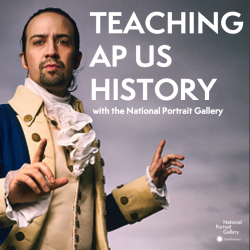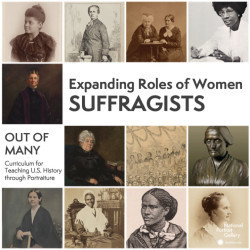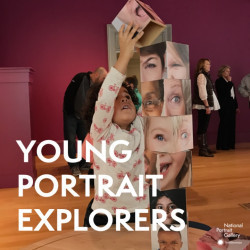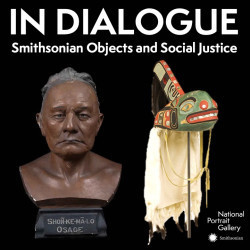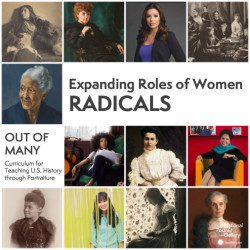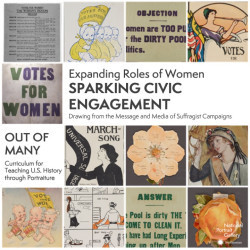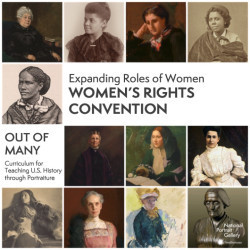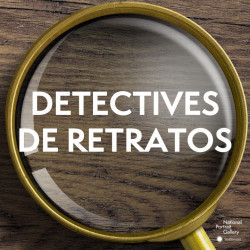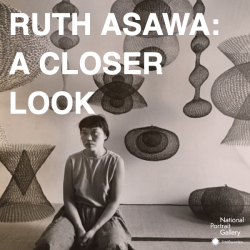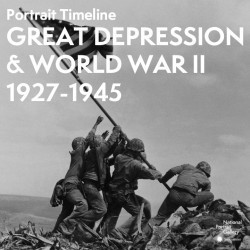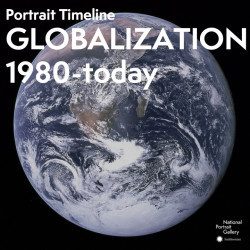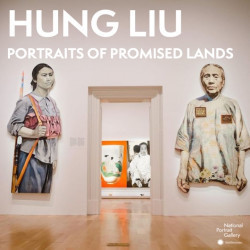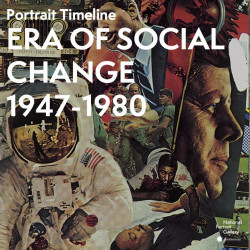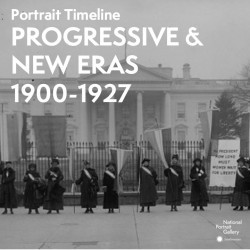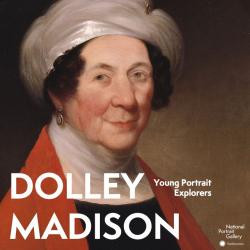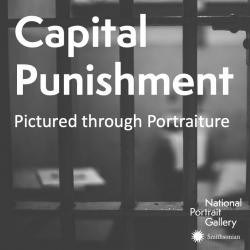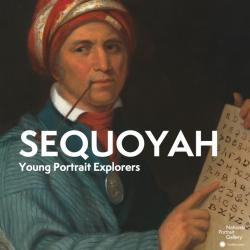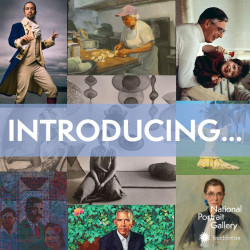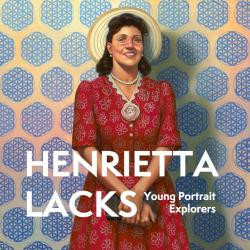Nicole Vance's collections
Teaching AP US History with the National Portrait Gallery
<p>This collection highlights the individuals who shaped the cultural, economic, political, and social developments of the United States from 1491 to today. The selected sitters compliment the curriculum for the College Board's <a href="https://apstudents.collegeboard.org/courses/ap-united-states-history">Advanced Placement United States History Course</a>. Open the paperclips on each portrait to find accompanying multiple-choice questions for test prep.<br></p>
<p>This collection was created in partnership between the National Portrait Gallery and Teacher Advisory Board Member and history teacher Christopher Evans.</p>
<p>#NPGteach</p>
<p><br></p>
 Nicole Vance
Nicole Vance
102
Expanding Roles of Women: Suffragists
<p>In this Learning Lab collection, suffragists featured in the Smithsonian’s National Portrait Gallery exhibition,<em> Out of Many: Portraits from 1600 to 1900 </em>are used as entry points to teach about the history of the suffrage during this time period. </p>
<p>During the nineteenth and early twentieth centuries, many women sought voting rights as the foundation of women’s rights, and they were often viewed as radical for having such a goal. As daughters and wives, women in the United States had few decision-making rights, let alone the right to own and control land, so having the power to make political decisions through suffrage was seen as extreme. When Elizabeth Cady Stanton initiated the first woman’s rights convention at Seneca Falls in 1848, some attendees expressed this concern. The struggle for women’s suffrage was rooted in the abolition movement and anti-slavery societies, where Black and white women organized together to end slavery. White suffragists learned from leading Black women abolitionists like Sojourner Truth and Frances Ellen Watkins Harper, who had been organizing and speaking publicly for many years before Seneca Falls. By the end of the Civil War, when voting rights for Black men were written into law, racism began to divide the suffragists.</p>
<p>Although Susan B. Anthony worked with Stanton to end slavery, they did not believe that Black men should gain suffrage before white women. In this set of Teaching Ideas, students will examine the details of this divide and discover how suffragists fought for women’s rights and social justice issues. For example, the journalist Ida B. Wells-Barnett advocated for Black women’s rights, including suffrage, and protested the lynching of African Americans. Lawyer Belva Ann Lockwood not only believed in women’s right to political representation but also in their capability of holding the highest office in the land: She ran for president in 1884 and 1888.</p>
<p>Throughout this collection, students will examine not only the portraits subjects but will also; gain insist into the larger historical time period in which the subjects lived, understand how the women in these portraits lived and located agency, and reflect on the present by considering how women continue to make changes in society.</p>
<p>This collection contains three lessons that highlight the American suffragist movement: "Reading Portraiture: Striking a Pose," "Engaging History: Unity and Division Within the Women's Suffrage Movement," and "Connections to the Present: Women Presidential Candidates."</p>
<hr>
<p><strong>Reading Portraiture: Striking a Pose</strong></p>
<p>In this lesson, students step into the roles of two leaders of the American women’s suffrage movement: Elizabeth Cady Stanton and Ida B. Wells. One of the most famous suffragists, Stanton was a founder of the National Woman Suffrage Association (NWSA) and a prolific writer and theorist of feminist thought. Wells was an investigative journalist and newspaper editor who led an antilynching campaign and fought for women’s suffrage. In addition, she founded the politically influential Alpha Suffrage Club, which aimed to give a voice to African American women who were excluded from mainstream suffrage organizations.</p>
<p>Inspired by the suffragists’ political use of the tableau vivant, or a carefully posed, motionless scene with living actors, this lesson will ask students to closely study—and bring to life—Stanton and Wells’ portraits and polemics.</p>
<p>Essential Questions</p>
<ul><li>Which Elements of Portrayal lend visual power to a portrait?</li><li>To what extent does a sitter’s pose convey a sense of authority and selfhood?</li></ul>
<p>Objectives </p>
<ul><li>Study the social and historical implications of primary sources and original works of art.</li><li>Extend the analysis of nineteenth-century portraits of suffragists into a dramatic, kinesthetic interpretation.</li><li>Identify some of the primary principles of the women’s suffrage movement.</li></ul>
<hr>
<p><strong>Engaging History: Unity and Division Within the Women’s Suffrage Movement</strong></p>
<p>Students will gain an understanding of the unity and division within the women’s suffrage movement through a two-part lesson. They will enter the lesson by considering how history is told through portraits, in terms of who is represented and who is not. The notable absence of African American abolitionists and suffragists from the Coronation of Womanhood group portrait provides a launching point to investigate why these individuals were sidelined from the women’s suffrage movement. At the same time, students will learn about instances when African American and white women came together in their struggle for equal rights.</p>
<p>The first part of the lesson involves gathering background information from a short video and reading. Then, students will analyze primary sources that convey the unity within the women’s suffrage movement. For the second part of the lesson, students will do more in-depth investigation into the various perspectives and debates around strategies for achieving women’s suffrage, which exemplify division within the movement. During an interactive “Chalk Talk,” students will respond to both quotes from these historical debates as well as to the opinions of their fellow classmates.</p>
<p>Essential Questions</p>
<ul><li>How has portraiture been used to represent the history of women’s suffrage?</li><li>How can we account for the missing or underrepresented perspectives in history and what can we do to change the narrative?</li><li>What caused division within the women’s suffrage movement?</li></ul>
<p>Objectives </p>
<ul><li>Students will explore how portraits present history.</li><li>Students will analyze additional primary sources to understand changes within the women’s suffrage movement.</li><li>Students will investigate suffragists’ differing perspectives.</li></ul>
<hr>
<p><strong>Connections to the Present: Women Presidential Candidates</strong></p>
<p></p>
<p>Students will conceptualize portraits of women who ran for president in the late nineteenth century and more recently. They will begin by examining former presidential candidate Shirley Chisholm’s portrait. During the main part of the lesson, they will make connections between women who have run for presidential office in recent years and Belva Ann Lockwood, a suffragist who was a two-time presidential candidate in the 1880s.</p>
<p>Students will delve into women’s biographies by reading articles and conducting independent research. Afterward, they will create a portrait of a woman presidential candidate based on the Elements of Portrayal and the biographies they have read.</p>
<p>Essential Questions</p>
<ul><li>How do the experiences of historical women who ran for president compare to those of women today?</li><li>Which factors does an artist consider when creating a portrait of the president or presidential candidate of the United States?</li></ul>
<p>Objectives </p>
<ul><li>Students will investigate women’s biographies to understand what motivated them to run for president of the United States.</li><li>Students will apply their knowledge of reading portraiture and the Elements of Portrayal to create portraits of women candidates for presidential office.</li></ul>
<p></p>
<hr>
<p>#NPGteach #OutOfMany</p>
<p>Keywords: Suffrage, Suffragists, Suffragette, Women's Suffrage, Portraiture, Voting Rights, Enfranchisement, Nineteenth Amendment, Seneca Falls, Susan B. Anthony, Elizabeth Cady Stanton, Ida B. Wells, Sojourner Truth, Abigail Scott Duniway, Frances Ellen Watkins Harper, Frederick Douglass, Lucy Stone, American Equal Rights Association (AERA), Belva Ann Lockwood, Shirley Chisholm, Female Presidential Candidates, Female President, Campaign, See/Think/Wonder, Strike a Pose, Tableaux Vivants, Chalk Talk, Portraiture, Making Portraits<br></p>
 Nicole Vance
Nicole Vance
74
Expanding Roles of Women
<p>This Learning Lab complements, "Expanding Roles of Women," an interdisciplinary curriculum guide, featuring portraits from the Smithsonian’s National Portrait Gallery exhibition,<em> Out of Many: Portraits from 1600 to 1900. </em>The portraits are used as entry points to teach about the history of women in America during this time period. This collection serves as a home base, organizing the following components: (1) Background Essay and Timeline; (2) Reading Portraiture 101; (3) Lesson Plans; (4) Assessments; (5) Teaching Posters; (6) Additional Resources; (7) Curriculum Guide; and (8) Videos for Educators.</p>
<p>Throughout these Learning Lab collections, students will examine not only the portraits’ subjects and artists but will also gain insight into the larger historical time period in which the subjects lived. By studying the exhibition’s portraits, students will be able to understand how the women in these portraits lived and located agency. Furthermore, students reflect on the present by considering how women today continue to make changes in society. <br></p>
<p>Educators will come to this Learning Lab collection from a wide range of disciplines and grade levels and can use the activities and resources as they see fit. The materials have been developed toward middle school social studies classes to allow teachers to scaffold lessons and add extension activities as needed. This Learning Lab collection was designed to be integrated with flexibility. It can be used in order, as single-time activities, or in various combinations to support existing topics in the curriculum.</p>
<p>#NPGteach<br></p>
 Nicole Vance
Nicole Vance
28
Expanding Roles of Women: Radicals
<p>In this Learning Lab collection, radical women featured in the Smithsonian’s National Portrait Gallery exhibition,<em> Out of Many: Portraits from 1600 to 1900, </em>are used as entry points to teach about the history of radicals during this time period.<br></p>
<p>From 1600 to 1900, women dramatically expanded their roles in politics and the professional sphere, including the arts. This set of Teaching Ideas explores the biographies and careers of those “radical” women who dared to create change in the cultural, political, and social spheres. Specifically, these lessons highlight Indigenous and Black activists who, despite being excluded from the broader suffrage movement, forged inroads for education and public awareness of racial inequities. The multi-hyphenate Zitkála-Šá grew up on the Yankton Sioux reservation in South Dakota. She cultivated her skill as a musician and writer, all in the face of forced assimilation at an Indian boarding school. Later, she advocated for Native American suffrage. Mary Church Terrell and Ida B. Wells-Barnett were influential political organizers. The increasing racial terrorism inflicted upon African American men ignited their activism. They would later become leaders in the women’s suffrage movement, founding clubs and organizations that would become hotspots for political mobilization. This section also addresses the ways that women artists and intellectuals used portraiture to promote a certain “visual identity,” or the elements and stylings that shape their public image.</p>
<p>Throughout this collection, students will examine not only the portrait subjects but will also gain insight into the larger historical time period in which the subjects lived, understand how the women in these portraits lived and located agency, and reflect on the present by considering how women continue to make changes in society.</p>
<p>This collection contains three lessons that highlight radical women: "Reading Portraiture: A Different Schooling," "Engaging History: Making Inferences with Primary Sources," and "Connections to the Present: Visual Identity."</p>
<p><strong><br></strong></p>
<p><strong>Reading Portraiture: A Different Schooling</strong><br></p>
<p>Students will gain an understanding of Zitkála-Šá’s experiences as a student and teacher at Indian boarding schools, particularly regarding how those experiences shaped her cultural identity and activism. To begin the lesson, students will explore their own identities. They will then compare and contrast two portraits of Zitkála-Šá. In addition, they will analyze an excerpt from one of Zitkála-Šá’s short stories.</p>
<p>Essential Questions</p>
<ul>
<li>How did Indian boarding schools impact the identities of Native Americans? What are their generational effects on Native cultures?</li>
<li>How do portraits demonstrate the complex identities of individuals?</li>
<li>What can we learn about an author’s beliefs by reading their work?</li>
</ul>
<p>Objectives</p>
<ul>
<li>Students will consider the complexities of their own identities and think about how they would represent themselves in a portrait.</li>
<li>Students will compare and contrast different portraits of Zitkála-Šá to consider the facets of the subject’s identity.</li>
<li>Students will analyze and annotate a primary source document.</li>
</ul>
<hr>
<p><strong>Engaging History: Making Inferences with Primary Sources</strong></p>
<p> </p>
<p>Students will examine cultural artifacts to gain an understanding of Mary Church Terrell’s radical approach to racial equality and women’s suffrage. First, students will read a portrait of Terrell, using the “See/Think/Wonder” thinking routine to spark their curiosity. Second, the teacher will model how to investigate primary sources and record inferences on a graphic organizer. Then student groups will move through a Gallery Walk to analyze a variety of primary sources and fill out their own inferences.</p>
<p>Essential Questions</p>
<ul><li>How can portraits initiate a deeper analysis of a person’s biography?</li><li>What can primary sources tell us about women activists in history?</li><li>How has Mary Church Terrell paved the way for today’s activists?</li></ul>
<p>Objectives</p>
<ul><li>Students will use thinking routines to begin a historical exploration of a portrait subject.</li><li>Students will analyze primary sources to make inferences about Mary Church Terrell’s life.</li><li>Students will compare the approaches of past and present activists</li></ul>
<p></p>
<hr>
<p><strong>Connections to the Present: Visual Identity</strong><br></p>
<p>In this lesson, students will determine what constitutes a “visual identity,” or the elements and stylings that shape a person’s public image. When people appear in public, they emphasize certain traits or characteristics, such as keen fashion sense, bold speech, or winsome facial expressions. On social media and other visual platforms, people savvily use physical appearance and personality to create a public-facing self.</p>
<p>Students will examine how portraiture was used to shape or define visual identity in the nineteenth century and how it is used today. Visual identity is a strategy to convey political aims and actions, as in the collective portrayal of suffragists and writers in Eminent Women. Alternately, visual identity can heighten a public version of the self, as in the striking pose of thespian Minnie Maddern Fiske. To conclude this lesson, students will draw connections between these nineteenth-century portraits and portraits of today’s radical women.</p>
<p>Essential Questions</p>
<ul><li>Which Elements of Portrayal contribute to an online presentation of the self?</li><li>Which values, identities, and actions can a work of art promote?</li><li>How have some women used portraiture to further their professional and political aims?</li></ul>
<p>Objectives</p>
<ul><li>Analyze the visual identity of the historical and contemporary portrait subjects.</li><li>Identify one present-day radical woman whose politics and personhood align with those of the historical women featured in the National Portrait Gallery’s portraits of Eminent Women and Minnie Maddern Fiske.</li></ul>
<hr>
<p>#NPGteach #OutOfMany</p>
<p>Keywords: Radicals, Women, Zitkala-Ša, Indian Boarding Schools, Yankton Dakota, American Indian Women, American Indian Citizenship, American Indian Activism, Primary Sources, Mary Church Terrell, Suffrage, M Street Colored School, Visual identity, Eminent Women, Minne Maddern Fiske, portraiture, portraits, </p>
 Nicole Vance
Nicole Vance
71
Expanding Roles of Women: Sparking Civic Engagement Assessment
<p>This Learning Lab collection can be used as an assessment conclusion to the study of the portraits in <a href="https://learninglab.si.edu/q/ll-c/pPEjlxzvSDYKI29e#r/61864">Expanding Roles of Women</a> or used alongside an existing unit of study on women’s suffrage or related topics. Sparking Civic Engagement, asks students to study ephemera from the campaign for suffrage. Students then create a campaign promotional item, such as a piece of apparel or a broadside, to take a stand on a current gender-based issue.<br></p>
<p></p>
<p>This assessment asks students to draw connections between the history of women’s suffrage in the United States and current gender-based issues, encouraging them to take a stand. First, students will study ephemera, or the ordinary, often transient objects, from the U.S. women’s suffrage movement: Among other artifacts, they will review a selection of witty banners that amplified the goals of protestors. They will also examine the resolute rhetoric of broadsides, the printed manifestos of the movement. Using these artifacts as models, students will then brainstorm current gender-based issues surfacing in their communities. Finally, students will design and create a campaign strategy and accompanying promotional materials, such as posters or apparel, to address their selected issue.</p>
<p></p>
<hr>
<p>#NPGteach #OutOfMany</p>
<p>Keywords: Suffrage, Civic Engagement, Campaign, Broadside, Postcards, Gender</p>
 Nicole Vance
Nicole Vance
34
Expanding Roles of Women: Women’s Rights Convention Assessment
<p>This Learning Lab collection can be used as an assessment conclusion to the study of the portraits in <a href="https://learninglab.si.edu/q/ll-c/pPEjlxzvSDYKI29e#r/61864">Expanding Roles of Women</a> or used alongside an existing unit of study on women’s suffrage or related topics. In this assessment, Women’s Rights Convention, has students imagine that specific portrait subjects are gathering to negotiate their demands for change.<br></p>
<p>Students will imagine what a diverse women’s rights convention may have been like if women of different backgrounds had originally attended the conventions that were initiated by women’s rights leaders Elizabeth Cady Stanton and Susan B. Anthony. Students will be divided into groups to take on the roles of various women. Since the women students will represent did not convene in real life, students will imagine what these women could have achieved together. First, they will conduct research on the person they are assigned to represent. Next, student groups will prepare for the convention by creating portrait posters and writing speeches. Finally, at the mock women’s rights convention, they will present their speeches and engage in dialogue with other participants represented by student groups. The goal is to negotiate and determine a list of demands from the perspective of a diverse group of suffragists, professionals, and radicals.</p>
<p>#NPGteach #OutOfMany</p>
<p></p>
 Nicole Vance
Nicole Vance
28
Explore! at the National Portrait Gallery
<p>This Learning Lab collection complements the National Portrait Gallery student Program, Explore!</p>
<p></p>
<p>The Explore! program introduces young students to portraiture. They will be exposed to what makes up a portrait and search portraits for clues to learn more about themselves and significant Americans. Through interactive discussions and hands-on activities, students will read, compare, and contrast portraits across the collection.</p>
<p></p>
<p>After completing this lesson, students will be better able to:<br></p>
<ul><li>Identify key components of a portrait and discuss what we can learn about the sitter through these components.</li></ul>
<p>#NPGteach</p>
 Nicole Vance
Nicole Vance
63
Ruth Asawa: A Closer Look
<p>Learn more about artist Ruth Asawa and her wire sculptures through portraits!</p>
<p>#NPGteach</p>
<p>Keywords: Asian American, Artist, Sculpture, Photographs, Portraiture</p>
 Nicole Vance
Nicole Vance
17
Great Depression and World War II (1927-1945) with the National Portrait Gallery
<p>This portrait timeline spotlights individuals who shaped the history, development, and culture of the United States of America between the years 1927 and 1945.</p>
<p>#NPGteach</p>
<p>Keywords: Great Depression, New Deal, Federal Art Project, Hollywood Cinema, World War II, Incarceration of Japanese Americans, internment camps</p>
 Nicole Vance
Nicole Vance
63
Progressive & New Eras (1900-1927) with the National Portrait Gallery
<p>This portrait timeline spotlights individuals who shaped the history, development, and culture of what is now the United States of America between the years 1910-1927.</p>
<p>#NPGteach</p>
<p>Keywords: Progressive Era, Women's Suffrage, Triangle Shirtwaist Factory Fire, Industrial, Workers, Prohibition, Nineteenth Amendment, Imperialism, </p>
 Nicole Vance
Nicole Vance
67
Dolley Madison: Young Portrait Explorers
<p>Learn how Dolley Madison shaped the role of first lady of the United States (the wife of a U.S. president) by serving as a trusted friend and hostess (someone who entertains people) to important guests at the White House.</p>
<p>#NPGteach</p>
<p><strong>Keywords:</strong> Dolley Madison, First Lady, White House</p>
 Nicole Vance
Nicole Vance
22
Capital Punishment: Pictured through Portraiture
<p>This Learning Lab complements a National Portrait Gallery custom student program for American University's Fall 2020 course, CORE-107 Complex Problems Seminar: Death Penalty Perspectives. </p>
<p>Students will analyze and discuss portraiture relating to capital punishment in the United States.</p>
<p>#NPGteach</p>
 Nicole Vance
Nicole Vance
17

